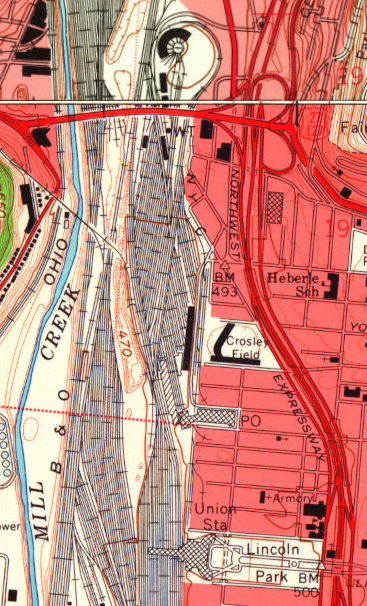Milw Roundhouse: (
Satellite)
C&EI Baker Yard: (
Satellite)
Kenneth Jackson
posted four photos with the comment:
First three photos are of the foundation of the Milwaukee Rd. roundhouse in Terra Haute. This is located on the north side of Hulman Ave. on the west side of the C&EI/CSX tracks that lead into Baker yard. The last photo is facing west on Hulman from the round house site. The red Ford is sitting approximately where the north east corner of the car shops would have been. Passenger station would have been directly north across Hulman. Does anyone have any pictures of the Milwaukee Station in Terra Haute?
Larry Graham Was this razed in the early '80's? Or mid-80's possibly?
Kenneth Jackson From what I can find, SOO did it right after their take over, so 85.
 |
| 1 |
 |
| 2 |
 |
| 3 |
 |
| 4 |
I saved a satellite image because someday this land may be developed.
CSX Baker Yard is of interest because it is about the only railroading left in this neck of the woods.
 |
| 1958 Terre Haute Quadrangle @ 1:24,000 |








































































